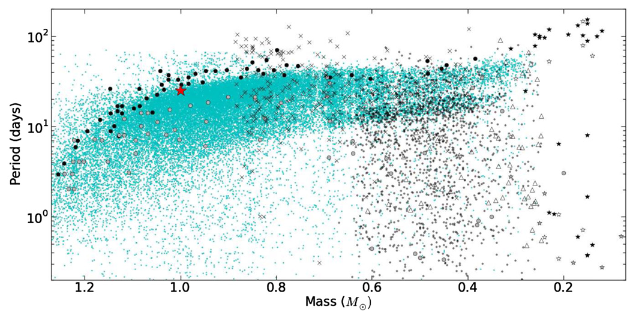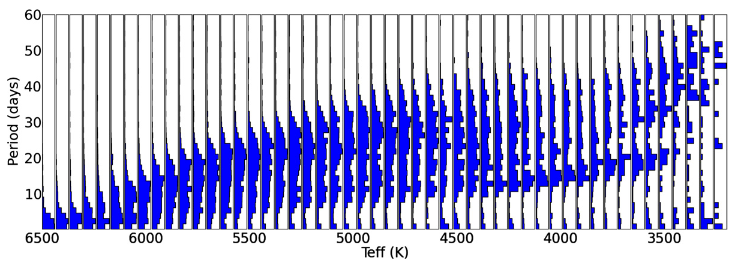Among stars there are fast rotators and slow rotators. Our sun is a slow rotator, a sizeable fraction of the angular momentum in the solar system is held within the planets, rather than mostly held in the Sun.
It’s much easier to find the rotational speed of stars (spectral line broadening) then it is to find planets around them.
In the dim distant past before any exoplanets were found, there was a hypothesis that we should look for planets around slowly rotating stars. I got to wondering if this hypothesis had held up given modern discoveries. It has. This makes it more easy to find exoplanets.
https://iopscience.iop.org/article/10.1088/2041-8205/775/1/L11/meta
“STELLAR ROTATION PERIODS OF THE KEPLER OBJECTS OF INTEREST: A DEARTH OF CLOSE-IN PLANETS AROUND FAST ROTATORS”.
“Of the 1919 main-sequence exoplanet hosts analyzed, robust rotation periods were detected for 737.Comparing the detected stellar periods to the orbital periods of the innermost planet in each system reveals a notable lack of close-in planets around rapid rotators. It appears that only slowly spinning stars with rotation periods longer than 5–10 days host planets”.
Also, I note that all cool stars (T < 5,000 K, the Sun is 5,778 K) with planets have rotation periods longer than 5 days, averaging (median) near 30 days. (The Sun is 27 days).
Unfortunately, the paper doesn’t have a control sample of rotation rates of sunlike stars without detected planets.

A control sample of coolish (T < 6500 K) sunlike stars without objects of interest (ie. excluding binaries, brown dwarfs and likely planets) can be foung in https://iopscience.iop.org/article/10.1088/0067-0049/211/2/24
“ROTATION PERIODS OF 34,030 KEPLER MAIN-SEQUENCE STARS”
The plot below is for rotation period vs star mass. Cool stars almost all have rotation periods longer than 5 days anyway.
So in order to confirm or reject the hypothesis that “we should look for planets around slowly rotating stars”, it is really necessary to replot the data from the above figure on top of one of the following charts.

